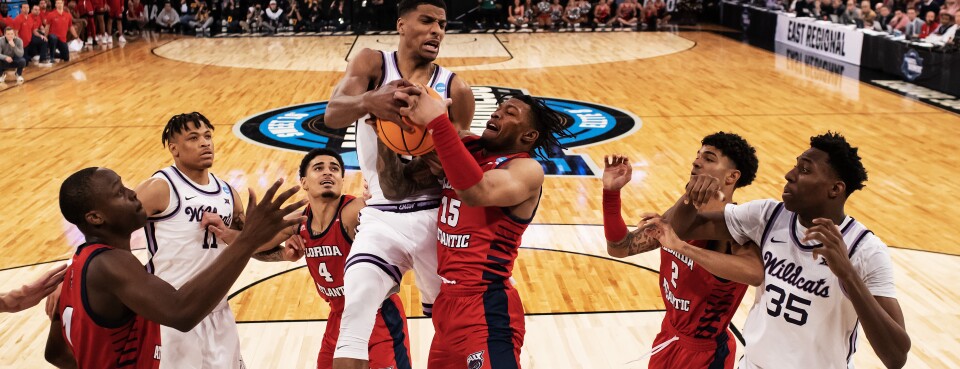Student athletes can earn money from their name, image, and likeness as creators, influencers, or from personal appearances. Lisa Greene-Lewis of TurboTax shares how student athletes and their parents can save money on their taxes.
The NCAA adopted an interim name, image, and likeness policy for college athletes in July 2021. It updated that guidance in October 2022 to clarify how schools can be involved with NIL.
With this being the first full year that many student athletes have NIL income they need to report, they need to be aware of new tax implications. Student athletes may also only be hearing about the taxes they need to pay on their NIL income, but they should know there are also ways to save on their taxes.
Student athletes can earn money from NIL as creators, influencers, or from personal appearances, and some are getting paid in crypto or creating and selling NFTs. They’re usually considered self-employed and report earnings on Form 1099-NEC if they’ve made $600 or more, or on Form 1099-K if they’ve had more than 200 transactions and more than $20,000 processed by a third-party payment provider.
Those who are paid in crypto will see it reported on a 1099-NEC at the fair market value on the date they were paid. When they hold the crypto as an investment and then sell it, they could have a capital gain if they sell it for more than it’s valued when they received it. If they have a loss, they can offset it against any capital gains.
Any additional loss can be offset against any other ordinary income, such as wages from a W-2 income. There also has been a trend of student athletes creating their own NFTs. When they sell the NFTs, they generally receive money processed by a third-party provider, which will be reported on a Form 1099-K. NIL athletes also may receive non-cash items as payment. In this case, they’d report the fair market value of the item on their taxes.
Because students earning money using NIL are considered self-employed, they have the same tax filing requirements as someone who’s a freelancer or independent contractor. They must file taxes if their net income is at least $400, because they’re required to file and pay self-employment taxes at 15.3%. They also must pay federal taxes based on their tax rate when they file their federal tax return. If they expect to owe at least $1,000, they also must pay quarterly estimated taxes.
There is a positive side to the taxes mentioned. Athletes profiting from NIL often are surprised to learn they can deduct expenses directly related to their NIL work, lowering their net income and taxes all around.
NIL athletes shouldn’t hesitate to deduct these expenses andshould keep receipts for anything they are deducting. Some directly related expenses that can be deducted and help their bottom line are marketing fees, agency fees, website development and support, equipment for their influencer work, and even travel expenses for appearances. Clothes and personal grooming expenses can’t be deducted because those are personal expenses used in everyday life.
If you are self-employed and expect to owe at least $1,000, you typically must pay your estimated taxes by the quarterly estimated tax deadlines. What many don’t know is that you can annualize your income.
Because the IRS knows that self-employed people don’t always earn income evenly over four quarters, it allows a tax break where people can show in which quarters they earned money to avoid penalties in quarters where they didn’t earn money. For instance, if an NIL athlete earned most of their money in the last two quarters of the year, they could annualize and show their income in the last two quarters when they earned it while avoiding a penalty in the first two quarters.
Another possible tax saving involves NIL athletes investing in retirement accounts. As self-employed people, they can contribute up to 25% of their net income, or $61,000 for 2022 (whichever is lower), to a SEP IRA until the extended tax deadline in October and possibly deduct the contributions on their taxes. If they make up to $20,500, they also can get up to $1,000 for the saver’s credit.
While NIL athletes have new tax implications to think about for the first time, their parents also have some new tax considerations. Should they claim their student athlete as a dependent? If so, what does that mean for their taxes?
Because NIL athletes are required to file their own taxes when they earn a net income of $400, students and parents must discuss whether they should still claim their student. While an athlete who’s a full-time student would still qualify, parents should still evaluate whether they can claim benefits such as education tax credits. Parents often don’t qualify for education credits, so if the student has eligible college expenses that do qualify, the parents should let their child claim the credits instead.
If a parent doesn’t claim their student as a dependent, the student would be able to claim the maximum standard deduction of $12,950 for 2022. But if they’re claimed as a dependent, their standard deduction could be lower because dependents claimed by another taxpayer must claim the greater of $1,150 or their earned income plus $400 not to exceed the standard deduction.
This article does not necessarily reflect the opinion of Bloomberg Industry Group, Inc., the publisher of Bloomberg Law and Bloomberg Tax, or its owners.
Lisa Greene-Lewis is a CPA and tax expert for TurboTax and has over 20 years of experience in tax preparation. She is passionate about breaking down tax laws and sharing tips to help taxpayers save on their taxes.
We’d love to hear your smart, original take: Write for us.
To read more articles log in.

